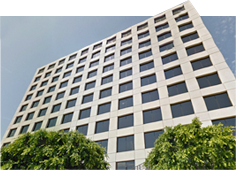The “B-1 in lieu of H-1B Visa” – A Useful Alternative in Appropriate Situations
As this year’s H-1B filing season comes to a close, employers not able to submit their applications on time or those whose cases are not chosen in the H-1B lottery will be looking for other options. The B-1 visa is commonly considered as a possible alternative, but this category does not cover typical employment scenarios. B-1 visa holders can only engage in limited business activities, such as attending meetings and negotiating contracts. A B-1 worker cannot work in the U.S., receive payment from a U.S. source or actively run a business in the U.S.
What if a business has an urgent need for a skilled professional but H-1B is not an option? This is where a little-known provision in the visa laws–the “B-1 in lieu of H-1B Visa”–may be applicable. Provided for under 9 FAM 41.31 N11, this visa category is the child of its two namesake visa categories–combining some attributes of both visas but identical to neither. This visa is particularly appropriate for foreign businesses that need a foreign national to perform work in the U.S. for the benefit of the foreign-based business for a short duration.
Qualifying for B-1 in lieu of H-1B Employment
Unlike the B-1 category, the B-1 in lieu of H-1B classification does permit work in the U.S. The activity must meet the definition of a specialty occupation and the worker must be qualified (hold a bachelor’s degree or equivalent). For example, engineering, science, medical, and education industry professions typically qualify. Other professions not typically requiring a four-year degree such as some IT professionals, registered nurses and home health aides, and certain entertainment industry professionals would not qualify.
If the interviewing officer believes that the activities are not of H-1B caliber, she may require an H-1B petition be filed with USCIS for adjudication. Because this is a relatively obscure visa category, the Department of State has advised its officers that in order to avoid a possibly delay at the port of entry, embassy officers should add the following notation to the visa: “B in lieu of H, 9 FAM 41.31 N.11.”
Similar to the general B-1 categories, individuals in B-1 in lieu of H-1B will typically be admitted to the U.S. for no more than six months. Unlike the H-1B category, changes of employer are not permitted.
Compensation Must Come from Abroad
The foreign worker can only be compensated by their foreign employer, they cannot receive a salary or remuneration from a U.S. source except for certain incidental reimbursements. Secretary of State Clinton clarified in a 2012 unclassified cable that where a U.S. business has a separate business abroad, the salary paid by the foreign entity to B-1 in lieu of H-1B workers is not prohibited. Employers seeking to qualify under this provision as a “foreign firm” are required to have an office abroad and have their payroll disbursed abroad.
Immigrant Intent Will be Reviewed
Unlike the general H-1B category, B-1 in lieu of H-1B does not permit dual intent. Meaning, like most other nonimmigrant visa applicants, an applicant for this visa will need to prove to the satisfaction of the embassy or border officer that their trip is truly temporary in nature. An improperly prepared application package or a finding of immigrant intentions can result in a much-dreaded 214(b) finding.
Recap
The B-1 in lieu of H-1B visa category gives employers another option under immigration laws to fill in short-term gaps in their workforce. With annual H-1B cap issues and significant preparation needed for traditional H-1Bs, the B-1 in lieu of H-1B may also be attractive as the application process is less burdensome. Of course, this category is not a substitute for the H-1B category, and it is contrary to immigration laws to employ a professional in the U.S. in B-1 in lieu of H-1B status for an extended period of time.






